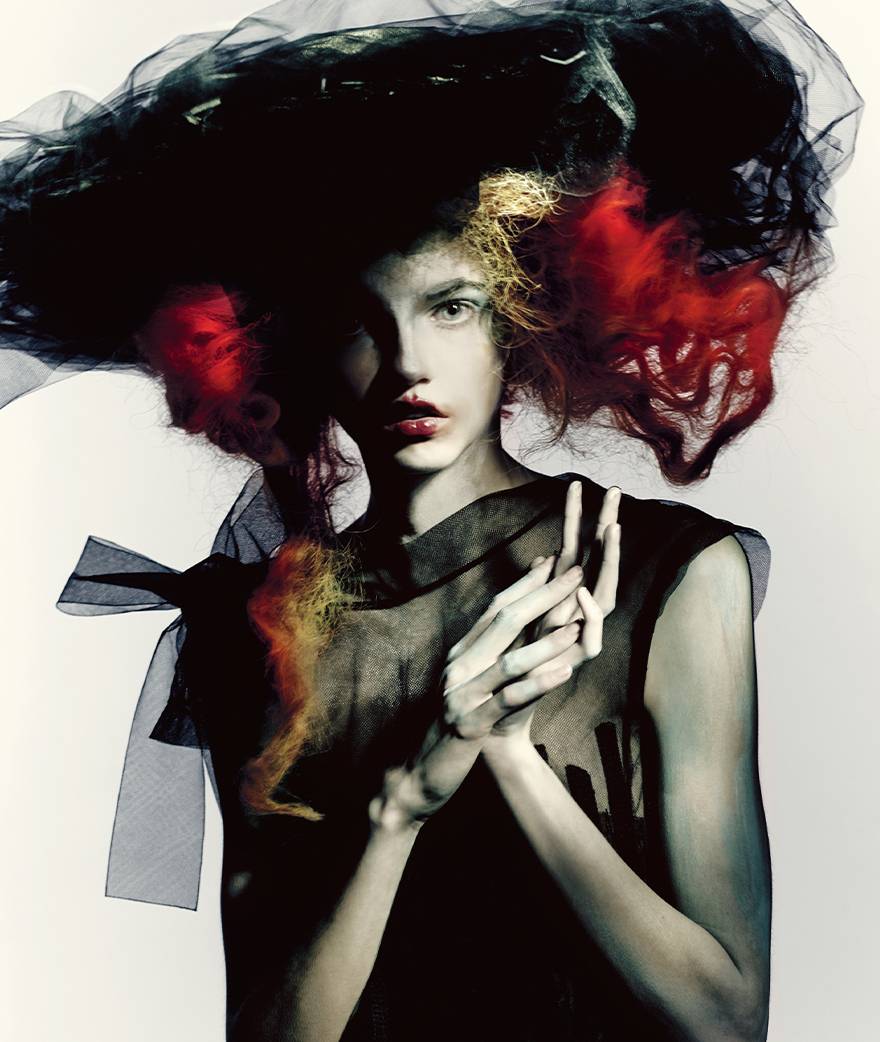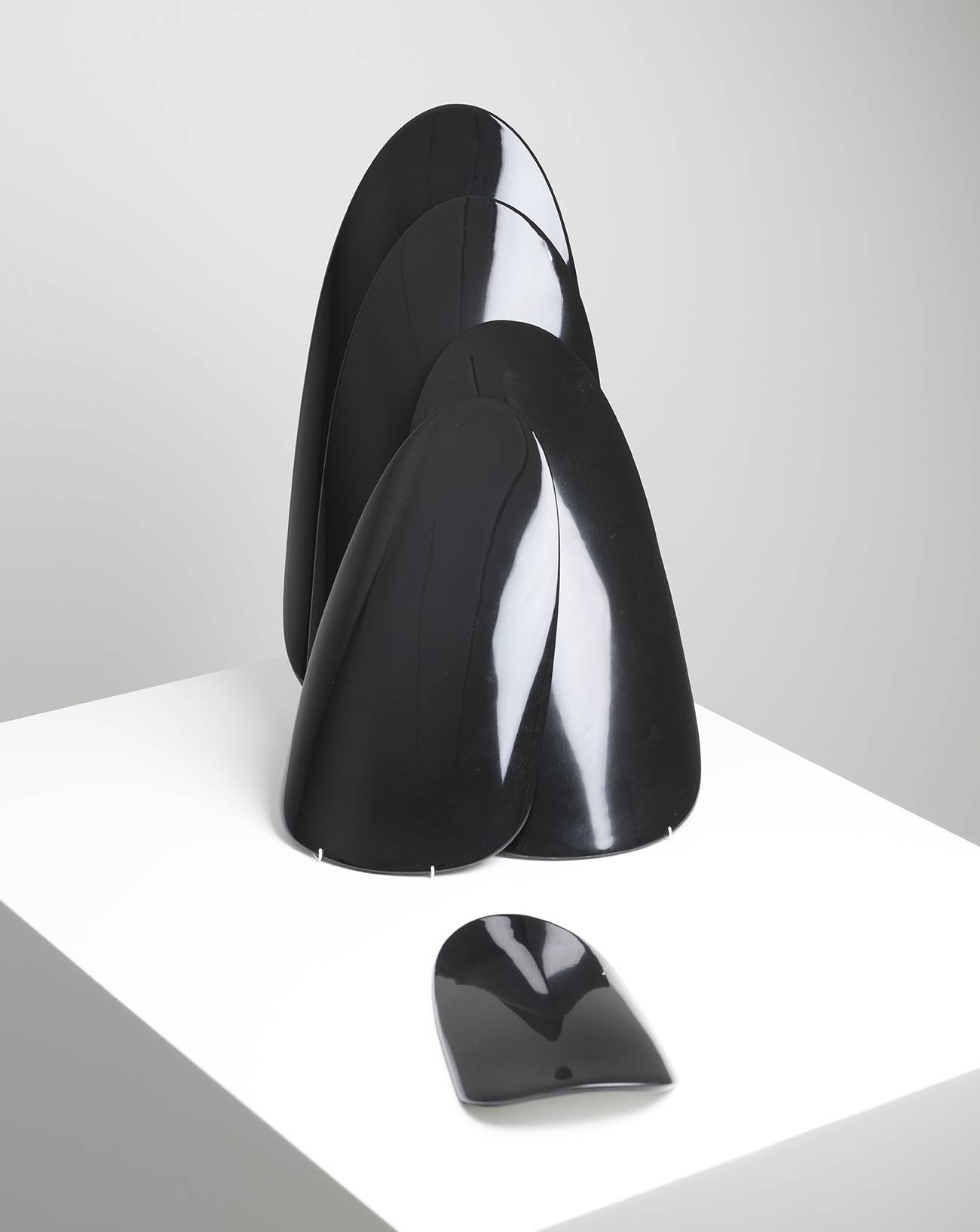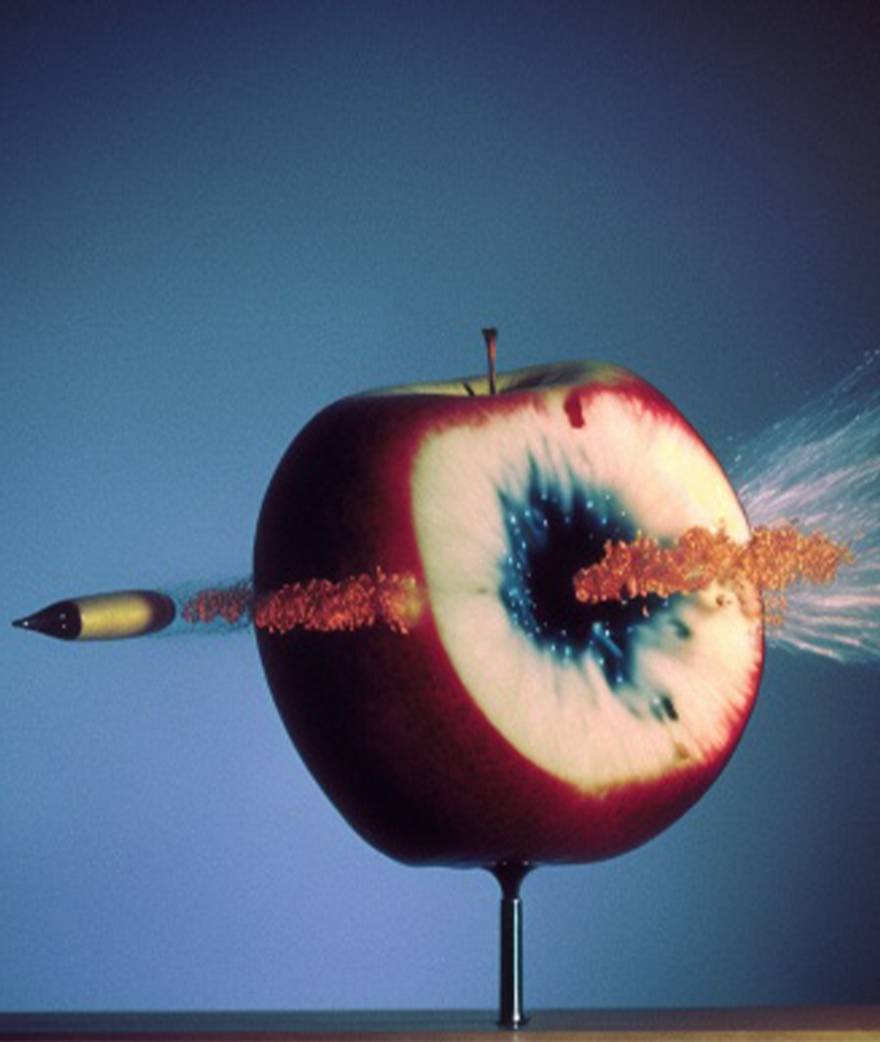An indelible presence in the history of art thanks to her cosmetic-surgery performances, the French phenomeon has never ceased to upset and bother.
Next month she’ll know the outcome of her court case: in early June, Paris’s Tribunal de Grande Instance will examine the grounds for damages put forward by the plaintiff, who is claiming $31.7 million from Lady Gaga (7.5% of the profits from the track Born This Way and its accompanying video). The reason? The pretty obvious borrowings from various works by the artist who is registered on her birth certificate as Mireille Suzanne Francette Porte (born 30 May 1947), but who, since the 1960s, has gone by the pseudonym ORLAN. Usually written out in capital letters, her chosen name resembles a brand, a commercial logo that she adopted long before it became the fashionable thing to do among artists. Moreover it’s a name that leaves no doubt about its bearer’s intention of becoming a character, of her desire to sculpt herself bit by bit, to model herself as a sculptor would model a lump of clay.
And indeed sculpting herself was something she did quite literally between 1990 and 1993, putting her body through a series of nine cosmetic operations which she entitled The Reincarnation of Saint ORLAN. Their theatrical staging stands out, with hindsight, as one of the most remarkable moments in 20th-century art history. Broadcast live in art galleries − long before reality TV made such an approach seem banal, or before the internet made self broadcasting as easy as blinking − the works showed ORLAN lying down in the operating theatre, dressed in Paco Rabanne or Issey Miyake and reading texts (Le Tiers instruit by Michel Serres), while the scalpel did its work on her conscious face – she always eschewed general anaesthetic, scoffing at the pain.
To understand the incongruity of such an approach, and how much it was a precursor of things to come, one needs to look at the context of the art world in the early 90s. In 1992−93, the exhibition Post Human, curated by Jeffrey Deitch, took as its subject the modification of the human body and the birth of the cyborg. ORLAN’s contribution was completely without precedent and probably unacceptably shocking for the era. Like all great works in the history of art, its power to astonish has remained entirely undiminished. ORLAN’s physical commitment, however, appears particularly extravagant in comparison to today’s artists, who seem to settle for every possible form of detachment and indifference and to shirk any confrontation with hostility. In undergoing the knife, ORLAN had no intention of denouncing cosmetic surgery (one can well imagine how her gestures might be interpreted in that light today), but rather of probing the canons of feminine beauty in Western art. She had her mouth altered to look like the one painted by François Boucher in his 1747 depiction of the Greek princess Europa (L’Enlèvement d’Europe); her forehead was remodelled to look like Leonardo da Vinci’s Mona Lisa (1503); while her new chin was inspired by Botticelli’s depiction of the goddess of love in his 1485 canvas The Birth of Venus. Her ambition was not to achieve a supposedly superior, or even a generic, beauty, but to wear on her face the stigmata of art history. What a fascinating idea: rather than becoming a part of art history, why not make art history a part of you – a burden, a reminder – and do it in the most spectacular and sensational way imaginable? It’s an idea that has a lot more substance to it than the one which recently led Deborah De Robertis to undress herself in front of Gustave Courbet’s L’Origine du monde in the Musée d’Orsay. Indeed ORLAN herself had already turned her attention to Courbet’s notorious canvas, producing her own version in 1989, in which she replaced the vagina with an erect penis and changed the title to L’Origine de la guerre.
ORLAN long ago decided her attitude towards gender, declaring herself to be at once “a man and a woman.” At the Parisian art fair FIAC, she sold a kiss for 5 francs (Le Baiser de l’artiste, 1977), or draped herself in miles of white fabric like a Baroque statue (Le Drapé-Le Baroque, 1971−90). In the 1980s she made her character the hero of virtual films for which she created all the posters. In other words she played with this double to which she had given birth, literally moreover, because the 1964 photo ORLAN accouche d’elle-m’aime (“ORLAN gives birth to herself/loves-herself”) shows her spawning an androgynous character whose history and destiny she seems to be have shaping ever since. Since the turn of the century she’s been doing it essentially through photography and digital manipulation, exploring yet further the diverse canons of feminine beauty. But above all she’s given this character a very real media presence, presenting herself in public with a two-tone black and yellow hairdo and matching round glasses like something out of a Marvel comic strip, a superhero whose appearance distinguishes him/her from ordinary mortals. It’s something she borrowed from the music industry, whose stars − from Robert Smith, with his bird’s-nest backcombed hair and red lipstick, to Sia, with her fringes falling well below her eyes − frequently appear in the guise of an avatar.
Extravagance is one thing ORLAN has never given up. In the age of the “businessman artist” − surrounded by an army of assistants, surveying a bank of screens showing the latest auction results in real time − her “folkloric” character remains suitably disturbing. She owns this folklore, plays it up when it suits her (to the journalists at an exhibition opening: “Look, there’s fire coming out of my arse!”), never gives in to propriety or decorum, constantly reminding the world that “contemporary” art didn’t originally set out to please, but to disturb and to bother. And she herself clearly isn’t content to be pleased with the indisputable legitimacy her work has brought her, but has every intention of disturbing and bothering a whole lot more. And still disturbing and still inspiring is her oeuvre to date, which has lost none of its effect. A good example is one of her last surgical operations, undertaken in New York in 1993, during which she had prostheses that are usually used to reshape the chin inserted at each temple. Over 20 years later, they’re still there, and ORLAN often brushes them with glitter powder, observing the gazes of her interlocutors which inevitably fixate furtively on these unnatural and insolent protuberances. And it’s precisely these protuberances, among others, that form the basis of the conflict that opposes her not so much against Lady Gaga as against the pop star’s artistic directors who, like all artistic directors (those in the music, fashion and events industries), blithely pillage the inventions of artists for the purposes of ephemeral entertainment.
In this context, where what were once courageous aesthetic questionings are turned into a sad mood board, the vestiges of ORLAN’s daring and bravery seem to have fallen into the hands of very uninspired creatives, for there is indeed an awful lot of her oeuvre that found its way into the Born This Way video, from the Baroque drapery to the implants. Indeed it’s almost inevitable, and ORLAN would have been okay with it if a formal request (which would also have been a mark of courtesy) had been made with respect to this very literal quotation. Whatever the outcome, she’ll continue to inspire, just as she inspired David Cronenberg’s aborted script Painkillers, which he planned to shoot in the early 2000s and which told the story of Saul Tenser, “an artist with a high pain threshold” who was clearly reminiscent of ORLAN. And in truth this is what distinguishes her from all her peers: her ability not just to produce objects, but to inflict ingenious tortures on the imaginary that are as inexhaustible as they are delicious.
ORLAN Today, FRAC Basse-Normandie Caen, from April 23rd to August 20th 2016.























